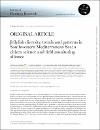Jellyfish diversity, trends and patterns in Southwestern Mediterranean Sea: a citizen science and field monitoring alliance
الملخص
Jellyfish (Cnidaria and Ctenophora) are an essential component of marine ecosystems and represent a potential effect, positive or negative, for several economic activities. Jellyfish blooms and non-indigenous species (NIS) introduction can shift ecological community structure and energy transfer. Despite their importance in ecosystem function and services, knowledge of jellyfish fauna diversity and phenology are largely lacking for the southern Mediterranean Sea. Here, we present an overview of the current state of jellyfish biodiversity in Tunisia. Based on a comprehensive literature survey, historical records and unpublished data, 66 jellyfish species, including 11 non-indigenous species, have been recorded in Tunisia between 1994 and 2020. Additionally, based on field surveys and a citizen science sighting program between 2004 and 2020, we present data on the spatial distribution of 13 conspicuous jellyfish taxa and the phenology of the eight most frequently detected species (Aurelia solida, Cotylorhiza tuberculata, Pelagia noctiluca, Phyllorhiza punctata, Rhizostoma pulmo, Rhopilema nomadica, Olindias muelleri and Velella velella) in Tunisian two ecoregions, the Western Mediterranean and the Tunisian Plateau. The 17 year survey showed a shift in R. pulmo, A. solida and P. noctiluca phenology. Additionally, citizen science revealed an increase in the spatial range of P. punctata (NIS) and the distinct phenologies of populations in the two ecoregions.
المجموعات
- العلوم البيولوجية والبيئية [919 items ]


